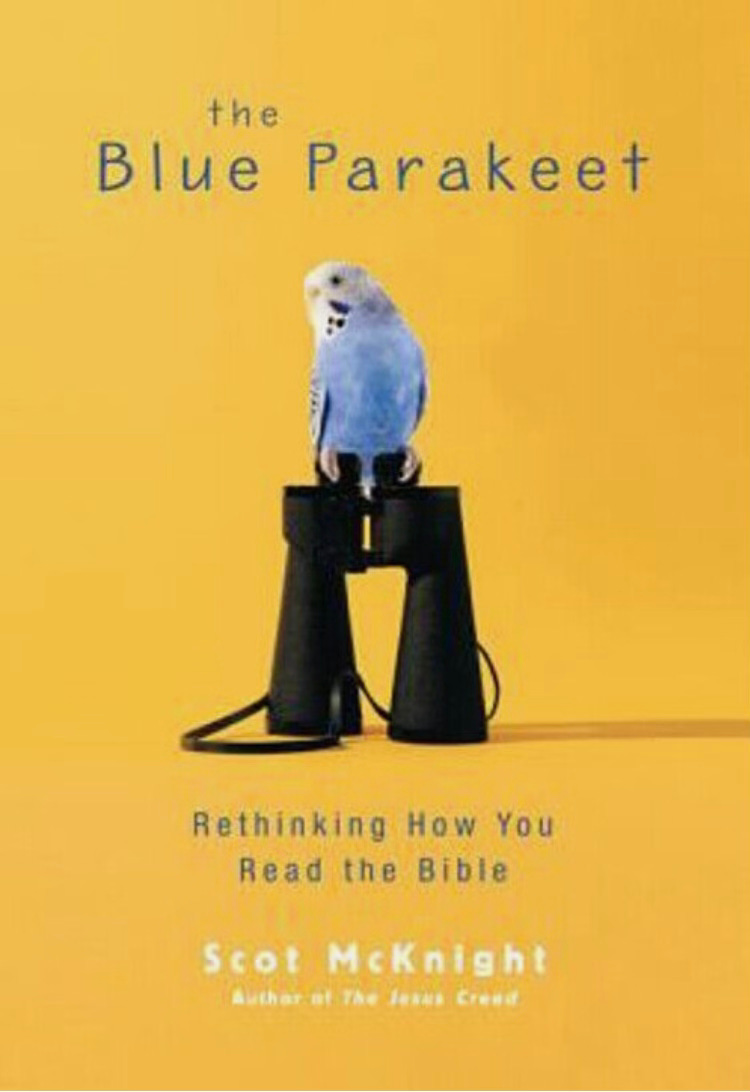Scot X. McKnight, The Blue Parakeet: Rethinking How You Read the Bible, Zondervan (2010, 2nd edition 2018).
I can still smell the coffee as I sat at the local shop with my new friend.
“Have you read The Blue Parakeet,” she asked? At first, I was confused. Many at my university had been reading Blue Hole Back Home, a novel by Joy Jordan-Lake, and I thought that was the book she meant.
“I started it,” I said honestly, “but never finished it.” As the conversation continued I realized the book my friend was referencing was something different.
“Scot McKnight,” she said. “He is the author.”
Later, after I went back to my office, I dug through a stack of books on my desk. There it was. A bright yellow book my sister had given me not long before. On the front cover was a blue parakeet.
This was sometime around 2011, give or take a year. I don’t remember exactly. But I do remember my questions about complementarian theology were already simmering.
The Blue Parakeet didn’t answer all my questions. Indeed, as readers of The Making of Biblical Womanhood know, I didn’t leave complementarian theology immediately. What The Blue Parakeet did was give me the tools to read the Bible better. It gave me the tools to think more critically about the so-called “clobber” passages used against women: 1 Timothy 2, 1 Corinthians 14, and the household code passages. It gave me the confidence to realize that questioning what I had been taught about gender roles wouldn’t cost me my faith. The Blue Parakeet wasn’t the end of my journey away from complementarianism, but it may have been the beginning.
I highly recommend The Blue Parakeet as a gift for those in your life who are afraid to even consider leaving complementarian theology. It is a great book, too, for small groups and Sunday Schools. It doesn’t answer every question, but it offers tools to help you think more critically and more biblically about difficult texts in the Bible. It is a great place to start the conversation.
See below for one of my favorite parts of The Blue Parakeet (from chapter 12: What Did Women Do in the Old Testament) and stay tuned for Saturday (December 7) when I will give you 2 more books.
Know the Story of the Bible
The story of the Bible tells us stories about women that I call stories of “WDWD.” Many of you know about the bracelet that some have worn since the mid-1990s with these letters on it: WWJD. Those letters stand for “What Would Jesus Do?” and they are a moral reminder of our renew-and-renewing approach to the Bible to live as Jesus would have us live in our day and in our way. My WDWD acronym is one we should consider when we think about women in church ministries: What Did Women Do? in Bible times. In one of my classes at North Park I ask students to chart what many of the women in the Bible did, and as the class progresses, the charts get longer and the activities of women more obvious. You might try it on your own…What did [women] do? They led, they prophesied, they taught, they were apostles, and they were local church mentors…In my conversations with friends after we have discussed bot the WDWD passages and the “Women Keep Silence Passages” (WKSP), I always conclude with this question: Do you permit women to do in your churches what women did in the Bible and in the early churches?”
Thanks
!





